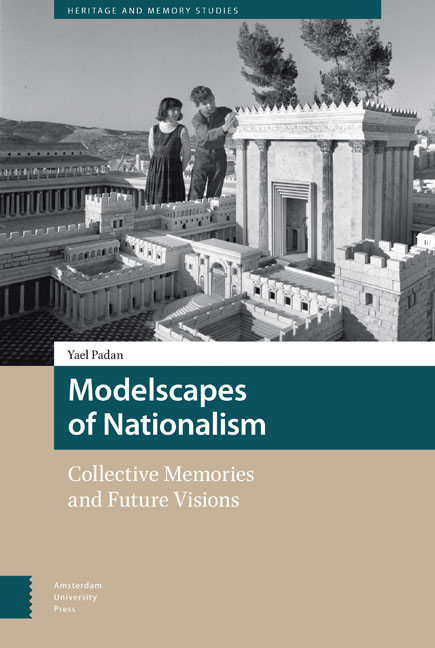Book contents
- Frontmatter
- Dedication
- Contents
- List of Illustrations
- Preface
- Introduction: Narratives into Objects, Objects into Narratives
- 1 The Qualities of Modelscapes
- 2 Models and Modern Perceptions of Nationalism
- 3 The Second Temple Model
- 4 Mini Israel
- 5 The Valley of the Communities
- Conclusions
- Bibliography
- Index
- Frontmatter
- Dedication
- Contents
- List of Illustrations
- Preface
- Introduction: Narratives into Objects, Objects into Narratives
- 1 The Qualities of Modelscapes
- 2 Models and Modern Perceptions of Nationalism
- 3 The Second Temple Model
- 4 Mini Israel
- 5 The Valley of the Communities
- Conclusions
- Bibliography
- Index
Summary
A modelscapes is a specific mode of representation, made of constellations of architectural models which are displayed to the public. The term ‘modelscapes’ refers to the multiplicity of objects which make up such clusters and reflect a totality of meaning that no individual model can offer. This term also suggests an awareness of a panoramic experience, which is necessary in order for the visitors to feel that they are presented with an entire picture. It is obvious in miniature modelscapes, but it also exists in larger ones which the visitors can enter, as many of them provide raised viewpoints over their sites.
Unlike some other ‘-scapes’ such as townscapes or landscapes, modelscapes are planned creations of individuals or institutions according to an interior structured logic. Their spatial layout and the relationships between their components reflect a social and cultural context. The modelscape claims to provide an authoritative and credible representation, which is revealed to the visitors by moving around or inside it with their bodies and gaining different views as well as a physical involvement in the space. Consequently, the visitors are integrated into the modelscape, and invited to participate in its suggested reality. Furthermore, this model reality is intended by the planners to be conceptually projected onto the exterior life-world which it represents. Thus the modelscape is a tool for constructing reality and collective identity.
The alluring attractiveness of such ‘realities’ was explored by analysing the basic characteristics which condition our understanding of modelscapes. Modern modes of perception provide the cultural frame for the experience of modelscapes. In addition, their ‘correct’ perception is the result of interpretations which are conditioned by the social and cultural contexts in which they are made. The bodily experiences which modelscapes offer support the narratives which they communicate and participate in the construction of modern subjectivity and perception of the self and the world. Thus although many modelscapes seem to be naive sites of entertainment, they represent an ideological stand.
Because models refer to external sources, the viewer is invited to make comparisons between the model and its reference object. However, since the modelscape is an intentionally planned environment it is capable of representing selected aspects of its external referents. Hence it provides a simplification of reality into manageable space and time, which become more legible and controlled.
- Type
- Chapter
- Information
- Modelscapes of NationalismCollective Memories and Future Visions, pp. 207 - 218Publisher: Amsterdam University PressPrint publication year: 2017



